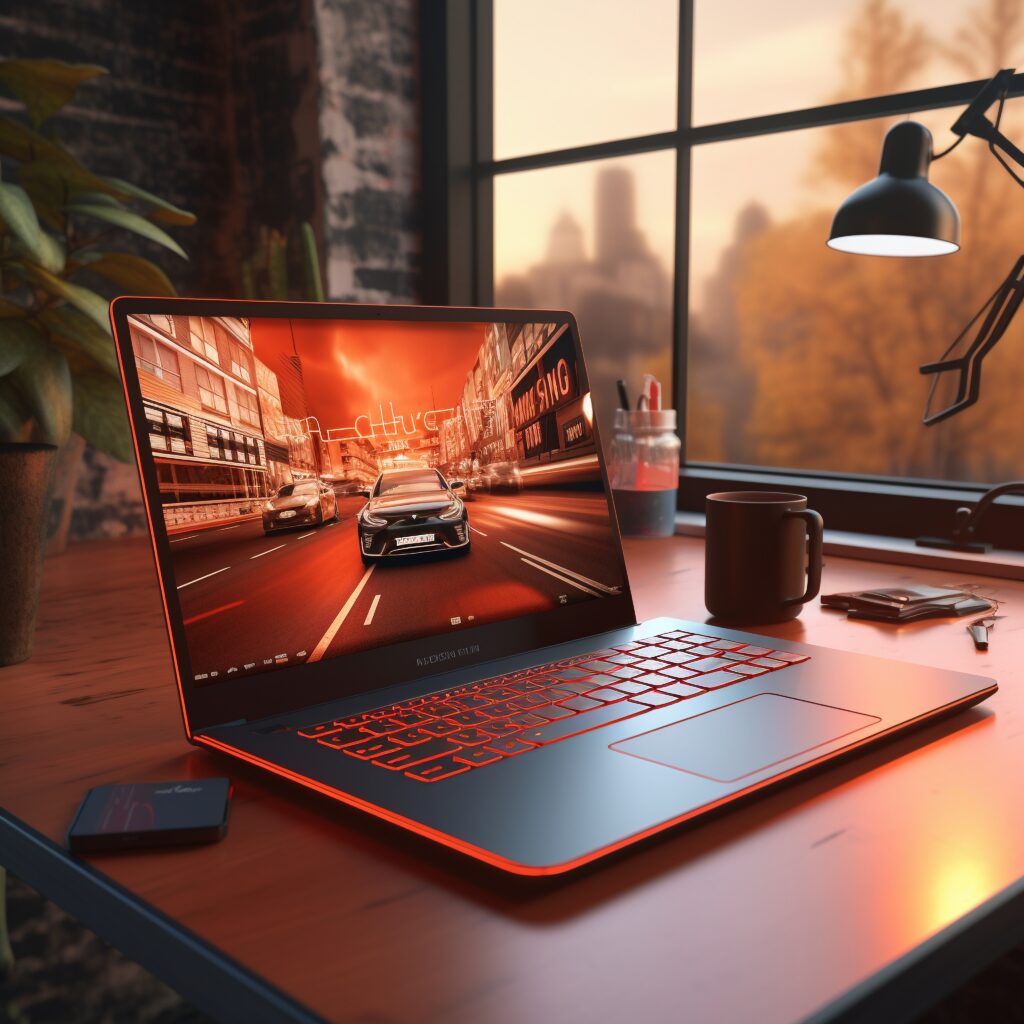Laptops have become a necessary tool for work, play, and communication in today’s fast-paced world. But when selecting a laptop, one feature that’s frequently disregarded is its weight. Your laptop’s weight can have a big effect on how well you use it, especially if you’re always on the go. We’ll go into the topic of laptop weight in this post, discussing its significance, the variables that affect it, and how to achieve the ideal compromise among portability and performance.
Table of Contents
Understanding Laptop Weight
As the name implies, laptop weight describes the whole weight of a laptop. It includes any extra parts, such as the charger, in addition to the laptop itself. This weight, which is commonly expressed in pounds or kilos, is a major factor in figuring out how portable and practical a laptop is.
Factors Influencing Laptop Weight
A laptop’s weight is determined by a number of factors, including as its size, construction materials, and internal components. Let’s examine these elements in more detail to see how they affect the total weight.
Size: Larger laptops typically weigh more since they have larger screens and more extensive keyboards.
Build Materials: The weight of the laptop is affected by the materials selected, such as carbon fiber, plastic, or aluminum.
Internal Components: The weight of the laptop may increase due to components such as the processor, graphics card, and battery.
Lightweight Laptops: A Boon for Portability
Ultrabooks, or lightweight computers, have become quite popular because of their superior weight-to-performance ratio. Because of their thin and light design, these laptops are perfect for students and employees who are constantly on the go. Ultrabooks have a remarkable battery life in addition to being lightweight.
Performance vs. Weight
Even though they are more portable, lightweight laptops might not always function as well as their heavier counterparts. Finding a balance that suits your unique demands is essential. Should you need a laptop for demanding activities like gaming or video editing, you may have to give up some weight in exchange for better performance.
Selecting the Right Weight as per Your Needs
It’s important to take your needs into account while choosing a laptop. Do you enjoy portability and travel frequently? Or do you require a strong workstation because you are a professional? Your laptop’s ideal weight range will depend on your use case.
Laptop Weight Categories
Laptops can be grouped according to weight to accommodate various user preferences. Let’s investigate these divisions:
1. Ultrabooks:

– Ultrabooks are a class of laptops known for their outrageous convenientce and lightweight plan. They are normally characterized by their thin profiles, frequently under an inch thick, and their weight, which is typically around 2 to 3 pounds (0.9 to 1.4 kilograms).
– These laptops are built with efficiency in mind and often feature low-voltage processors, which provide a good balance of performance and power efficiency. Their aim is on portability, making them perfect for professionals and students on the flow.
– Ultrabooks often come with solid-state drives (SSDs) for faster boot times and overall system performance. Because of its extended battery life, you can perform tasks or enjoy on mobile devices without worrying about needing to recharge them frequently.
– Because of their smooth plan and lightweight form, ultrabooks are a magnificent decision for people who focus on transportability and battery duration yet need a PC that can deal with regular figuring undertakings.
2. Thin and Light Laptops:

– Thin and light laptops offer a balance between performance and portability. These laptops are slightly larger and heavier than ultrabooks but are still relatively easy to carry.
– They typically have a weight range of 3 to 5 pounds (1.4 to 2.3 kilograms), making them suitable for individuals who need a bit more computing power without sacrificing too much in terms of portability.
– Thin and light laptops come with a variety of processors, including both standard and low-voltage options, providing flexibility for different computing needs.
– These laptops commonly combine SSDs and hard drives to offer a speed and storage capacity compromise. They have a good battery duration, which makes them versatile to a scope of purposes, like work, sight and sound, and light gaming.
3. Mainstream Laptops:

– Mainstream laptops are a versatile category that caters to a wide range of users, from students to professionals. They offer a reasonable balance between weight and features.
– These laptops can vary significantly in size and weight, with weights ranging from 4 to 7 pounds (1.8 to 3.2 kilograms). They are not as lightweight as ultrabooks or thin and light laptops but still offer good portability for everyday use.
– Mainstream laptops come with various processors, including standard voltage CPUs, which provide better performance for tasks like video editing, programming, and multitasking.
– They often feature a mix of storage options, including larger hard drives and smaller SSDs. Although battery life varies, popular laptops are often made to balance mobility and performance, making them appropriate for a variety of users and workloads.
4. Gaming Laptops:

– Gaming laptops are a different breed altogether, primarily designed for gaming and resource-intensive tasks. These laptops are on the heavier side, with weights ranging from 6 to 12 pounds (2.7 to 5.4 kilograms) or even more.
– They are equipped with powerful processors and dedicated graphics cards to deliver high-performance gaming experiences. However, this added power comes at the cost of increased weight and reduced portability.
– Gaming laptops often feature large, high-refresh-rate displays and advanced cooling systems to handle the heat generated during intensive gaming sessions.
– Battery life is usually limited on gaming laptops due to their high-performance components. They are best suited for gamers and professionals who require top-tier performance but are less concerned about portability.
The choice of laptop weight category should align with your specific needs and priorities. Whether it’s ultraportability, a balance between performance and portability, or raw computing power, there’s a laptop category to suit your requirements.
How to Measure Laptop Weight Accurately
Include all extra equipment, including chargers and any external drives, when calculating a laptop’s true weight. This will help you visualize the mass you’ll be carrying more accurately.
Materials Used in Laptop Construction
The weight of a laptop is mostly determined by the materials that were used in its manufacturing. As an illustration, computers with aluminum bodies are often more durable but may also weigh more than those made of plastic or carbon fiber.
Laptop Weight and Battery Life
A laptop’s weight can also affect how long its battery lasts. Because they can fit larger batteries without introducing too much weight, lighter laptops usually have superior battery life.
Laptop Weight and Durability
Durability is an additional factor to think about. Although lighter computers are more easily transported, their durability might not match that of larger, more durable laptops made for harsh conditions.
The Evolution of Laptop Weight
There had been a discernible shift over time toward laptops that are lighter without sacrificing functionality. Manufacturers are now able to produce products that are more portable and slimmer thanks to technological improvements.
Importance of Laptop Weight for Travelers
A portable laptop can make all the difference for frequent travelers. It lets you work or pass the time while on the road without feeling weighed down by your gadget.
Laptop Weight in Professional Settings
Performance may need to take precedence over weight for professionals who require powerful machines for jobs like graphic design or video editing. Finding the ideal fit for your unique work demands is crucial.
Conclusion
In the world of laptops, which is always changing, how heavy your gadget is affects how satisfied you are with it overall. Choosing the ideal laptop requires striking the correct balance between portability and performance. Knowing your demands as well as how laptop weight affects them is crucial, regardless of whether you’re a professional, student, or tourist.
Let’s answer any queries that may be on your mind at this point.
FAQs

1. How can I measure the weight of my laptop accurately?
A) Include the weight of any additional equipment, such as the power source and any external drives, when determining the exact weight of your laptop. To find out the overall weight you’ll be carrying, weigh your laptop along with these accessories.
2. Are lightweight laptops less durable than heavier ones?
A) Compared to larger, more rugged computers, lightweight laptops are typically made for mobility and can be less durable. Over time, nevertheless, improvements in manufacturing and material science have increased their endurance.
3. What’s the difference between ultrabooks and thin and light laptops?
A) Ultrabooks prioritize extreme portability and are generally lighter and thinner as thin and light computers. Laptops that are light and thin balance weight and performance.
4. Can lightweight laptops handle demanding tasks like gaming or video editing?
A) While some lightweight laptops aren’t as powerful as larger gaming laptops, they can nevertheless manage light video editing and modest gaming. A more capable laptop could be required for demanding work.
5. How does laptop weight affect battery life?
A) Because lighter computers can hold larger batteries without becoming too heavy, they frequently have longer battery lives. They are therefore perfect for extended use while on the run.

